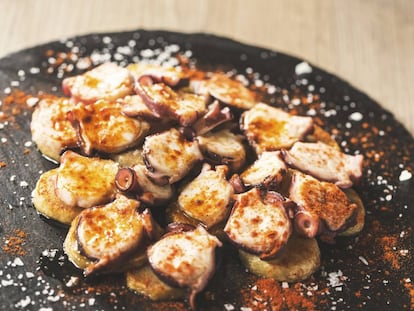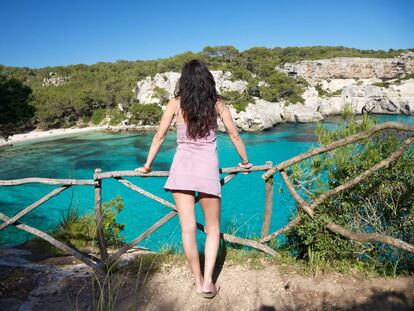El Bierzo: gateway into 10th-century Spain
The fall is the perfect time to discover this ancient land of Celts, Romans, Visigoths and Knights Templar
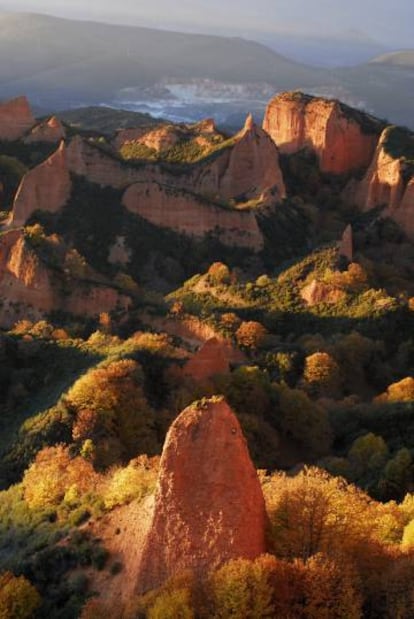
Maybe it’s because they are walled in by mountains. Or because of their odd location that makes them neither from Galicia, Asturias or León – although they share traits with people from all three regions.
In any case, the people of El Bierzo are easy to identify. Besides their accent (again, neither purely Galician nor Asturian nor Leonese, but a bit of everything), the bercianos are simple, tough people who can be proud and patient, reserved (but not mistrustful) and quite cheerful.
And one more thing: they all share a genuine feeling of belonging to a land with a natural, gastronomic and cultural landscape that would be worth a visit even if the people were not the way they are.
The ‘botillo’ dish may sound unattractive, being made from intestine, but it is deeply satisfying
A good trip to El Bierzo, an area of roughly 2,800km2 located on the western edge of León province, should last at least a long weekend. Visitors should take up headquarters in Ponferrada, its capital and the heart of the comarca both physically and culturally. Getting around by car is easy, as distances are short, but it requires some skill to navigate a few of the mountain roads, especially in snowy or foggy weather.
While El Bierzo is pretty at any time of the year, it takes on added charm in the fall, when its forests of chestnut and walnut trees start dropping their load on the ground, and the hillsides acquire a variety of hues. This is also the time when El Bierzo’s solid mountain cooking comes into its own, as temperatures begin to drop.
The capital
Ponferrada grew to a respectable size with the surge in mining. The city, which is home to 67,000 residents, is still grappling with the effects of this industry’s decline. The town is clearly divided into a high area and a low area, with the Sil river running through the middle. Nearly everything worth seeing is in the upper part, including the Knights Templar castle and the Roman Catholic basilica.

After many years in a state of dereliction, the castle has been restored and has become a symbol of the city, while the church contains an effigy of Nuestra Señora de la Encina (Our Lady of the Holm Oak), a semblance of the Virgin Mary that attracts significant local devotion and is also the patron saint of El Bierzo. The basilica is also a major stop on the Camino de Santiago pilgrimage route.
The old quarters afford a few interesting sights, including the Watch Tower, the only stand-alone one in all of Spain. There are some interesting museums as well, such as the Radio Museum, the brainchild of Luis del Olmo, a popular radio journalist who was born here. There is also a Railroad Museum, but the really big museum around these parts, the Energy Museum, is located outside city limits inside a former electricity plant. This is a good place to understand the role that coal played in the life of entire generations of bercianos.
But Ponferrada is also renowned for its lively social life. Virtually every bar in town will serve a free, generously-sized tapa with any order of corto (the local name for beer on tap) or wine. A special mention is required for the patatas bravas (potatoes with hot sauce) in El Bodegón, which routinely ranks at the top of Spanish Best Bravas lists.
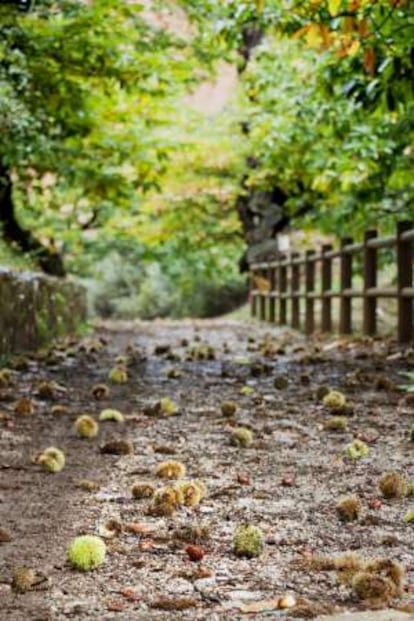
Considering its size, Ponferrada also has remarkably lively nightlife. Besides a reasonable number of live concerts each month, there is a wealth of pubs and nightclubs to choose from.
The valley of the hermits
“El Bierzo is an assembly of valleys about to awaken,” wrote El Bierzo native Juan Carlos Mestre, winner of the 2009 National Poetry Award. Heading south from Ponferrada, we come to the church of Santiago de Peñalba, a gem of Mozarabic architecture dating back to the 10th century. The temple sits in the middle of the Valley of Silence, otherwise known as Oza or Valdueza Valley, and has a double Visigothic arch with a central column that is reputed to be the most perfect of its kind.
Easy hikes are available from Peñalba, including the 18-kilometer looping trail of Tebaida Berciana. A walk in the mountains is a good way to rediscover the magic of the silence that monks found here over a thousand years ago, as we dart in and out of churches and monasteries such as the seventh-century San Pedro de Montes. The path runs parallel to the river and crosses rich forests of chestnut and walnut before winding back to the slate roofs of Peñalba, a charming village that is also a splendid example of popular architecture.
A Roman scar
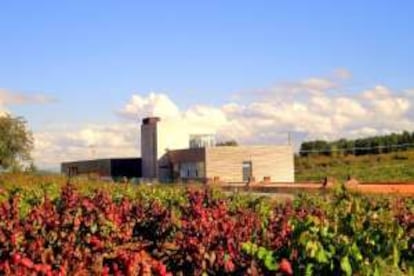
Las Médulas, on the other hand, are not visible until one is nearby. The Martian landscape on view is not natural. Even before any Knight Templars built a castle around here, even before the monks came around, El Bierzo – then known as Bergidum – was home to the Romans. And their thirst for gold left behind this stunning landscape that became a World Heritage Site in 1997. This 2,000-year-old open-air mine is also a brutal reminder of how much of an impact humans can have on the landscape. Not far from here is the lookout point of Orellán, and a tunnel leading out to a landscape of ochre and yellow.
Life in the vineyards
North of Las Médulas, sitting among vineyards, is Villafranca del Bierzo, the old historical capital before Ponferrada took over. Villafranca is the perfect starting point for a nature and culture route. A stroll along the Burbia river leads to Campo del Agua, which contains some of the last remaining pallozas, Celtic homes typical to the area.
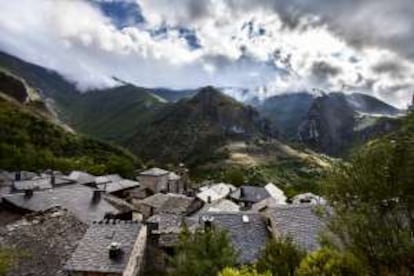
When hunger hits, any restaurant or mesón in Villafranca will do. This is the time of the year to try El Bierzo’s typical dish, the botillo, which may sound unattractive – pig intestine stuffed with offal, served with potatoes and broccoli rabe – but is deeply satisfying. The wine list is sure to feature local wines made with Mencía and Godello grapes. There is an abundance of wineries on the road between Villafranca and Ponferrada, besides several examples of Romanesque and Gothic architecture.
Serious hikers will want to climb the Catoute, one of the highest peaks in the region at an altitude of 2,117 meters. This was once home to the elusive capercaillie, although the bird has been hard to spot in recent years due to indiscriminate hunting. On the other hand, brown bears and wolves are easier to see inside this natural preserve – another good reason to come to El Bierzo.
English version by Susana Urra.
Tu suscripción se está usando en otro dispositivo
¿Quieres añadir otro usuario a tu suscripción?
Si continúas leyendo en este dispositivo, no se podrá leer en el otro.
FlechaTu suscripción se está usando en otro dispositivo y solo puedes acceder a EL PAÍS desde un dispositivo a la vez.
Si quieres compartir tu cuenta, cambia tu suscripción a la modalidad Premium, así podrás añadir otro usuario. Cada uno accederá con su propia cuenta de email, lo que os permitirá personalizar vuestra experiencia en EL PAÍS.
¿Tienes una suscripción de empresa? Accede aquí para contratar más cuentas.
En el caso de no saber quién está usando tu cuenta, te recomendamos cambiar tu contraseña aquí.
Si decides continuar compartiendo tu cuenta, este mensaje se mostrará en tu dispositivo y en el de la otra persona que está usando tu cuenta de forma indefinida, afectando a tu experiencia de lectura. Puedes consultar aquí los términos y condiciones de la suscripción digital.
More information
Archived In
Últimas noticias
Pinochet’s victims grapple with José Antonio Kast’s rise in Chile
Reinhard Genzel, Nobel laureate in physics: ‘One-minute videos will never give you the truth’
How Japan is trying to avert ‘digital defeat’
The complicated life of Francesca Albanese: A rising figure in Italy but barred from every bank by Trump’s sanctions
Most viewed
- Pablo Escobar’s hippos: A serious environmental problem, 40 years on
- Why we lost the habit of sleeping in two segments and how that changed our sense of time
- Charles Dubouloz, mountaineering star, retires at 36 with a farewell tour inspired by Walter Bonatti
- Trump’s obsession with putting his name on everything is unprecedented in the United States
- The Florida Keys tourist paradise is besieged by immigration agents: ‘We’ve never seen anything like this’
